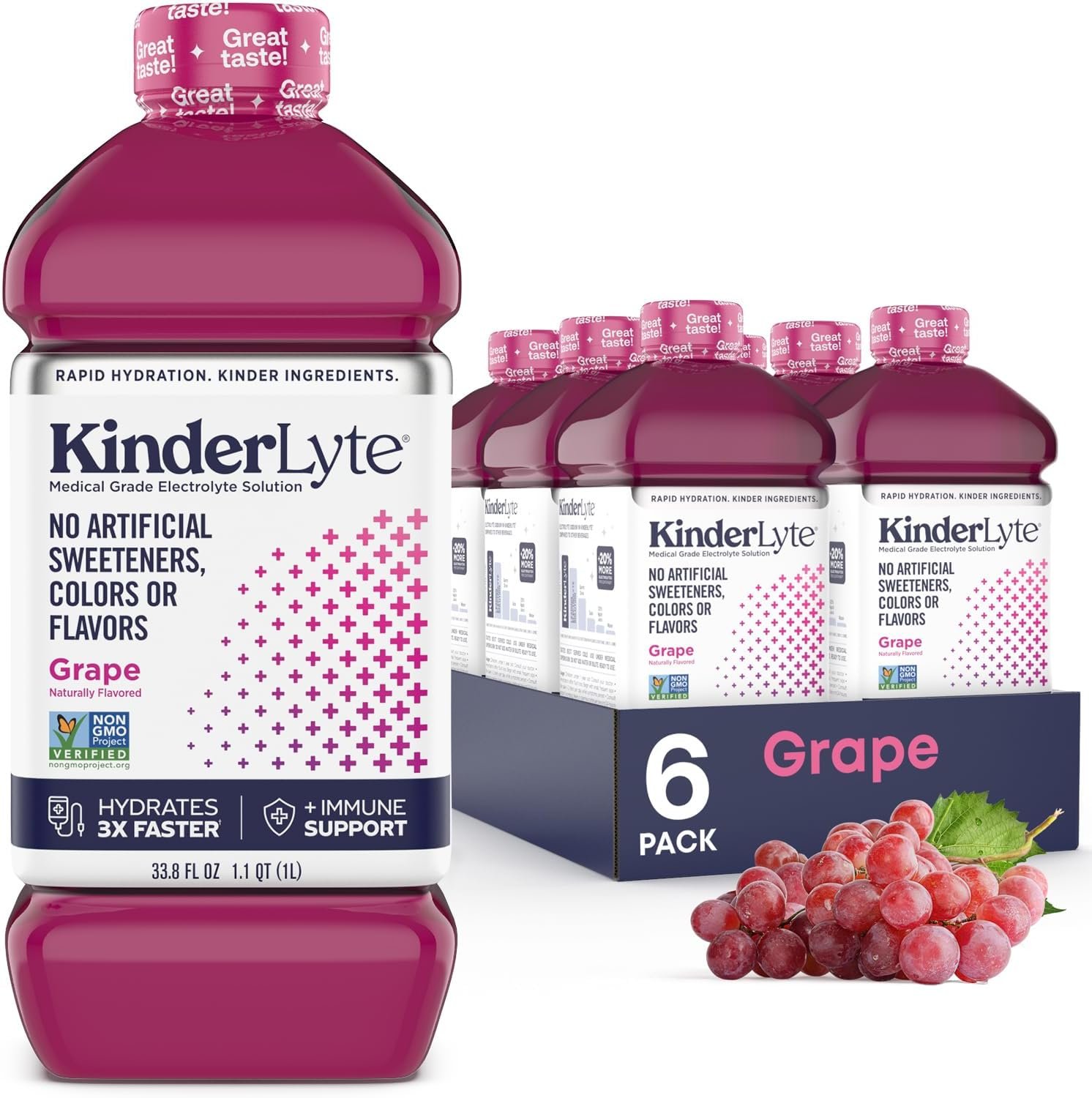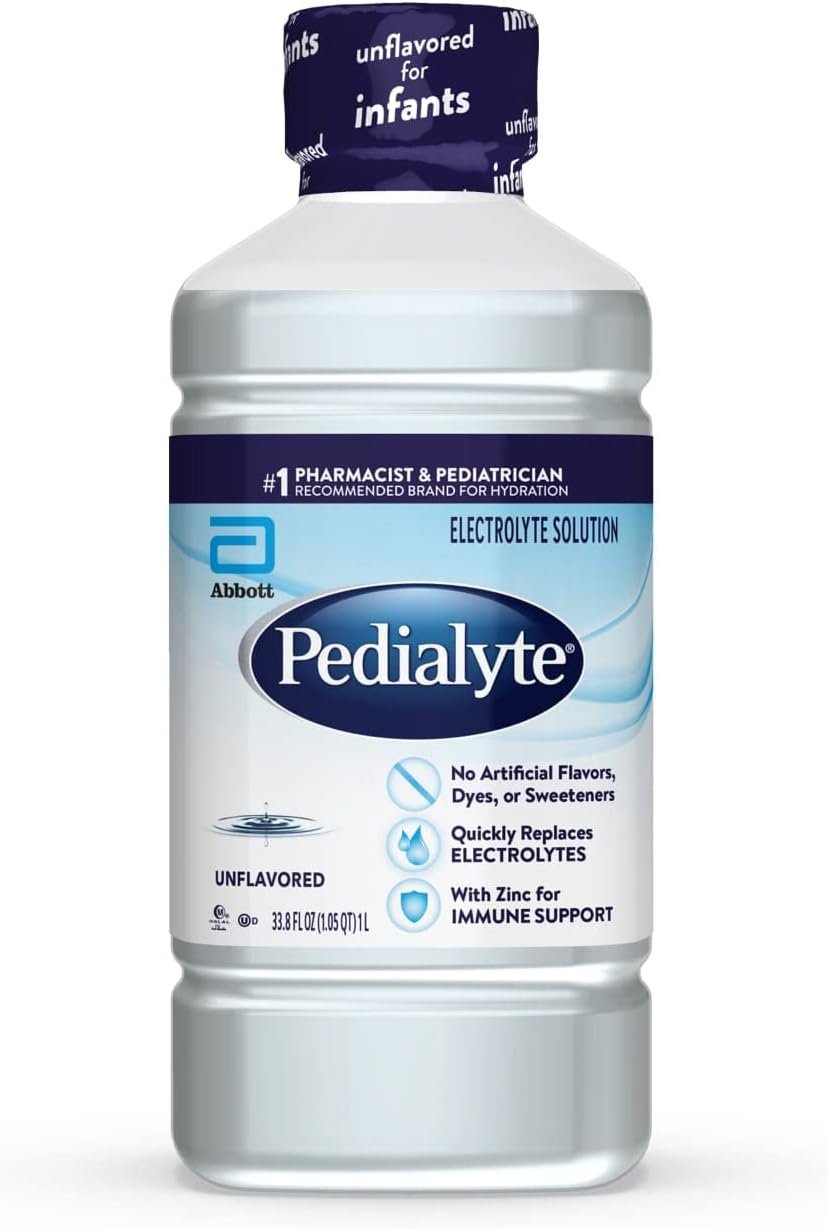What are the Best Foods to Feed a Sick Toddler?
This blog contains affiliate links, meaning that if you choose to purchase a product through a link, I will receive a small commission - this in no way impacts the amount you pay. Affiliate links are marked with an asterisk (*).
As a parent, it's never easy to see your toddler sick and uncomfortable. As a pediatric dietitian specializing in infant and child nutrition, the most important advice I give parents is to ensure their child stays hydrated to help them feel better.
It can also help to offer comforting foods that appeal to your child and support immune health. In this blog post, we'll discuss some ideas for what to feed a sick toddler to help them feel better.
What to Feed a Sick Toddler with a Cold
When a toddler is sick with a cold, it's important to make sure they stay hydrated and get the nutrients they need to support their immune system. Encourage your toddler to drink plenty of water, as this will help keep their nasal secretions thin and aid their body in fighting off the cold virus. Here are some additional food ideas that might appeal to a sick toddler when they have a cold:
Broth-based soups, such as chicken noodle or vegetable soup can be soothing for a sore throat and provide hydration and nutrients
Warm caffeine-free tea, such as chamomile tea with honey, can help soothe a sore throat and ease congestion. (However, it is important to not give honey to babies under the age of one)
Yogurt is a good source of protein and probiotics for toddlers, which can help support the immune system
Soft fruits, such as applesauce, mashed bananas, or pureed peaches, can be easy to swallow and provide some beneficial nutrients
Oatmeal is a warm, comforting food that can be easy on the stomach and provides some fiber and nutrients
Toast or crackers can be a bland but comforting food that may be easier for a sick toddler to eat
What to Feed a Sick Toddler with a Fever
For a toddler with a fever, again - focus on hydration. Water, diluted apple juice, or broth-based soups work well.
Popsicles, frozen fruits, or ice chips can help soothe a sore throat and provide some hydration. Foods with a high water content, such as soups, smoothies, and certain fruits and vegetables, such as watermelon and cucumber, can also aid in hydration.
Yogurt, soft fruits, oatmeal, and toast or crackers can also be helpful as they are easy on the stomach and provide nutrients.
What to Feed a Sick Toddler with Vomiting
When a toddler has a stomach bug with vomiting or diarrhea, hydration is the focus. They may also benefit from foods that are easy to digest. Encourage your toddler to sip small amounts of water frequently to help prevent dehydration. Oral rehydration solutions, such as Berri Lyte, Kinderlyte* and Pedialyte* can also help replace fluids and electrolytes lost through vomiting. Half-strength apple juice (made with 1 part apple juice and 1 part water) is also an effective option. Try making Pedialyte/Kinderlyte or half-strength apple juice popsicles to make hydration more appealing.


Ginger may also help decrease vomiting episodes. Make your own fresh ginger tea by slicing washed, unpeeled fresh ginger and boiling it in water for 5-10 minutes (strain the ginger pieces out before serving). Fresh, peeled ginger can also be grated into smoothies for a nutrition boost.
You may have heard of the BRAT diet (bananas, rice, applesauce, and toast) as a recommendation for kids and adults who are experiencing a stomach virus. However, this approach is actually outdated and not evidence-based. A better way to feed kids when they are sick (once they are able to eat) is to offer a variety of nutrient-rich foods that seem to appeal to them in order to help the GI tract recover.
What to Feed a Sick Toddler for Dinner
When it comes to feeding a sick toddler for dinner, choose foods that seem to appeal to your child, are relatively easy to digest, and provide important nutrients to support their recovery. Here are some ideas for healthy and comforting dinner options:
Chicken noodle soup: this classic soup can provide plenty of fluids, electrolytes, and protein to help your toddler recover.
Mashed sweet potatoes: sweet potatoes are a great source of vitamins and minerals and can be easy to digest when mashed.
Baked fish: mild, flaky fish like tilapia or cod can be easy to digest and provide protein and healthy fats.
Baked chicken: baked chicken is a good source of protein and can be seasoned with mild herbs and spices for added flavor.
Vegetable stir-fry: a mix of cooked vegetables like carrots, broccoli, and bell peppers can provide important vitamins and minerals, and stir-frying them can help make them easier to digest.
Rice or quinoa: these grains can provide healthy carbohydrates and be a good source of energy.
Toast or crackers: if your toddler's stomach is feeling upset, plain toast or crackers can sometimes be appealing.
Foods to Avoid During Cough for Toddlers
When a toddler has a cough, there are certain foods to avoid as they can worsen symptoms and irritate the throat. These include sugary and fatty foods or drinks that may weaken the immune system, and acidic and spicy foods that can cause acid reflux and further irritate the throat. Your toddler may find that warm broths, cooked fruits and vegetables, and lean proteins like chicken and fish are more soothing. Encourage them to drink plenty of fluids to stay hydrated, such as water and warm herbal teas.
A common concern is that eating dairy products, like milk and cheese, can increase mucus production. However, there is not a lot of evidence to show that this is always true. Not everyone is affected by dairy this way and some people can eat it without any problems. If you are worried about how dairy affects your child's mucus, talk to your pediatrician.
How Long Can a 2-Year-Old Go Without Eating When Sick?
When a 2-year-old is sick, they may eat less due to a sore throat, nausea, or feeling unwell. This is usually short-lived and not a major concern, as long as they are getting enough fluids, such as water or pediatric rehydration solutions* to prevent dehydration.
A healthy 2-year-old can go without eating for a day or two without consequences, as long as they're getting enough fluids. However, if they're refusing to eat for several days or showing signs of dehydration, seek medical attention. Offer small, frequent meals and snacks of easy-to-digest foods and don't force them to eat if they're not hungry.
What to Feed a Toddler with Fever and No Appetite?
To feed a toddler with a fever and no appetite, offer easy-to-digest foods that provide hydration such as water, clear broths, and oral rehydration solutions like Pedialyte*. Small amounts of bland foods like toast, crackers, rice, and soft fruits and veggies, such as applesauce or cooked carrots, might be appealing. Protein-rich foods like scrambled eggs or chicken soup with cooked vegetables can also be given if the toddler is willing to eat them. Avoid forcing the child to eat and offer small amounts of food frequently throughout the day.
Indian Food for Toddlers During a Fever
Indian food options for toddlers during fever include easily digestible and hydrating dishes such as khichdi, dahi rice, vegetable soup, dal, and idlis. These dishes are made with mild spices like cumin, coriander, and turmeric to avoid further stomach irritation. Offer small amounts of food frequently throughout the day and most importantly, ensure that your toddler is drinking enough fluids to prevent dehydration.
If you’re getting ready to start your baby on solids, or if your baby has recently begun his or her feeding journey and you need guidance on food sizing, balanced baby meals, and introducing the top allergenic foods, check out my online course for parents, based on my best-selling book which will walk you through the whole process of starting solids using a baby-led approach.
I also offer a FREE Baby-Led Feeding Essential Checklist to make sure you have everything you need to get started. In addition, I am accepting new clients in my private practice if you are looking for more personalized one-on-one support. Thanks for reading!
Thank you to dietetic intern, Alice Stejskal for her contributions to this blog post!



![[comp] Oatmeal with Milk and Bananas.jpg](https://images.squarespace-cdn.com/content/v1/5e2a59e571a0167764997885/1727347327957-M7JMHZ898J1ZEACZX0MV/%5Bcomp%5D+Oatmeal+with+Milk+and+Bananas.jpg)


![[comp]Apple_Sauce2 copy.jpg](https://images.squarespace-cdn.com/content/v1/5e2a59e571a0167764997885/1727348218662-7SX9SZ8B0QP6CD5A80H0/%5Bcomp%5DApple_Sauce2+copy.jpg)
![[comp] Carrot Sticks.jpg](https://images.squarespace-cdn.com/content/v1/5e2a59e571a0167764997885/1727348222169-X766ODO54CFS2YFXQUWQ/%5Bcomp%5D+Carrot+Sticks.jpg)




